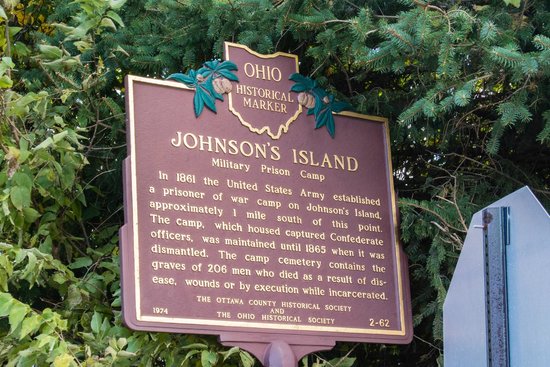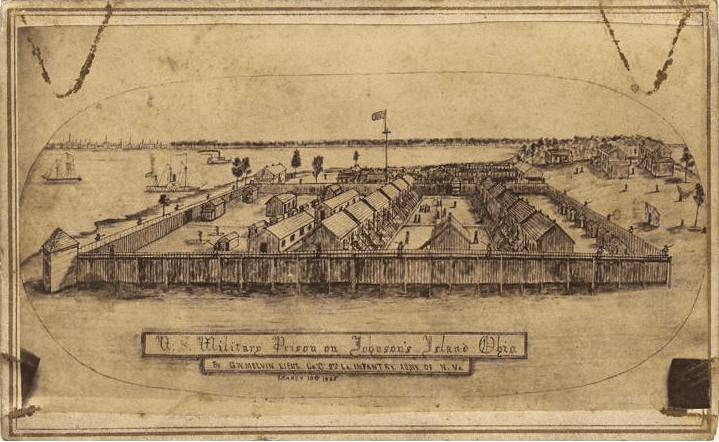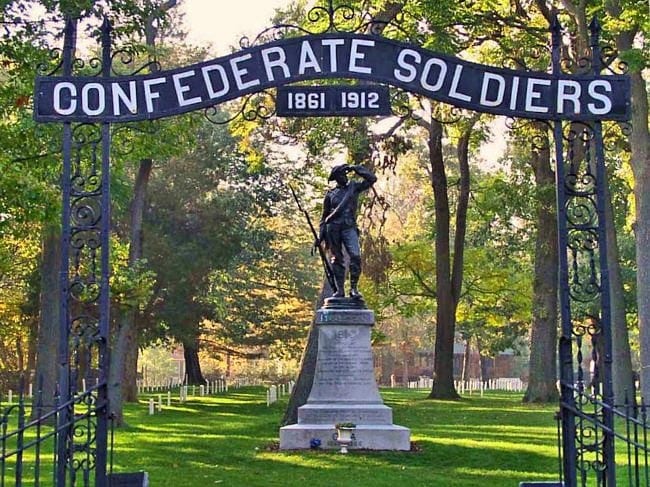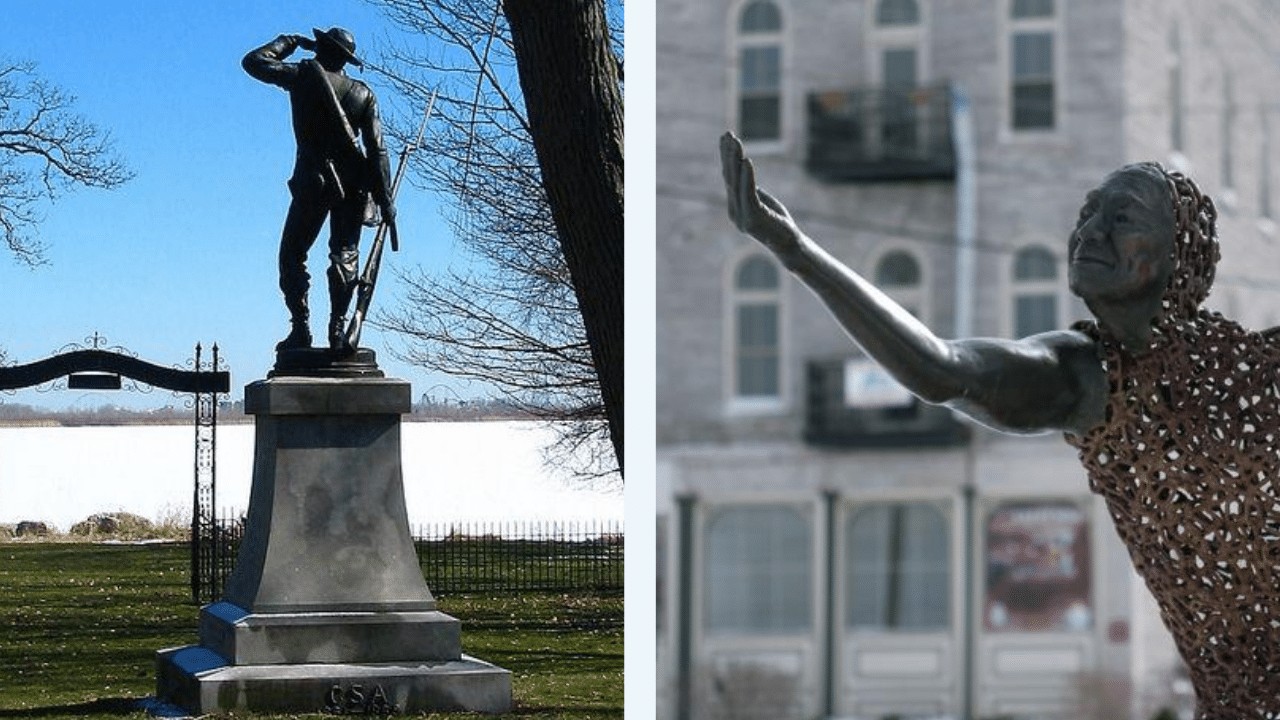Tucked away in Danbury Township, Ohio, is a hidden Civil War gem that is located on Johnson's Island just off the Marblehead Peninsula.
At first glance, Johnson's Island does not look like a former prison for Confederate Officers. Since 1865, the island has undergone an economic surge as many folks have moved to the island to escape the hassles of everyday life and enjoy the views and activities on Lake Erie.
While there are some year-round residents of the island, many have used the island to build a summer home.
However, the island looked much different in 1861.
Confederate Prison

The Civil War produced many prisoners, and often, the prisons throughout the North and South were overpopulated and not supported. The treatment of these prisoners was often inhumane, which was especially true in Andersonville, where Union prisoners were starved.
Johnson's Island was a different prison in that it was specifically for officers.
In late 1861, Federal officials selected Johnson's Island as the site for a prisoner of war camp to hold up to 2,500 captured Confederate officers. The island offered easy access by ship for supplies to construct and maintain a prison and its population.
Sandusky Bay offered more protection from the elements than on other nearby islands, which were also closer to Canada in the event of a prison break. Woods of hickory and oak trees could provide lumber and fuel. The U.S. government leased half the island from private owner Leonard B. Johnson for $500 a year and, for the duration of the war, carefully controlled access to the island.
The 16.5-acre prison opened in April 1862. A 15-foot-high wooden stockade surrounded 12 two-story prisoner housing barracks, a hospital, latrines, a sutler’s stand, three wells, a pest house, and two large mess halls (added in August 1864). More than 40 buildings stood outside the prison walls, including barns, stables, a limekiln, forts, barracks for officers, and a powder magazine.

They were used by the 128th Ohio Volunteer Infantry, which guarded the prison. The prisoners had a lively community, with amateur theatrical performances, publishing, and crafts projects available.
After the unraveling of a Confederate espionage ring that had been plotting the seizure of the Great Lakes warship USS Michigan and a mass breakout of prisoners, Forts Johnson and Hill were constructed over the winter of 1864–65. They were not operational until March 1865, in the war's final months, when the prisoner population peaked at 3,200.
More than 15,000 men passed through Johnson's Island until it was closed in September 1865. About 200 prisoners died as a result of the harsh Ohio winters, food and fuel shortages, and disease. Johnson's Island had one of the lowest mortality rates of any Civil War prison. Confederates made many escape attempts, including efforts by some to walk across the frozen Lake Erie to freedom in Canada, but only a handful of escapes were successful.

Among the prominent Confederate generals imprisoned on Johnson's Island were as follows:
- Isaac R. Trimble and James J. Archer (both captured at the Battle of Gettysburg)
- William Beall
- Thomas Benton Smith
- Edward "Allegheny" Johnson
- M. Jeff Thompson
- John S. Marmaduke
- William Lewis Cabell
- Lieutenant Christopher Columbus Nash
My Visit To Johnson's Island
With all the civil unrest over the death of George Floyd and the riots that ensued, I wanted to go back to my hometown to get some perspective.
As a history lover, I believe it is important to try and understand all sides of an issue, even a divisive issue like slavery. Many American statues are being taken down due to many saying these statues are symbols of inequality and racism.
However, where I grew up was very different then what I am seeing across the nation.
Johnson's Island is obviously no longer a prison and, over the past decades, has become a destination for the wealthy to build elaborate homes overseeing Lake Erie. All of the structures of the old prison have been taken down, and the only thing that remains is a quiet Confederate Cemetery.
What is ironic about this cemetery is that the men who died on foreign soil were men who fought to keep the institution of slavery. However, on the banks of Sandusky, there is another statue that memorializes the many citizens who helped enslaved slaves reach freedom through the Underground Railroad.
While one statue has its eyes on the south, the other has its eyes on the north.

During my visit, the cemetery was quiet. Most of the gravestones still had pennies or other coins on them from Memorial Day. A mist of rain filled the area while I was snapping pictures.
The world outside was chaos, and much of the world on the island had forgotten them.
The dedication of these men who died on this island should be remembered even with the flaws of their cause. Most of these men did not own a slave but fought for a nation that wanted to preserve the institution.
Their obedience is admirable, however misguided it looks in the 21st century.
If you cover the past and try to erase it, then you are destined to repeat it. The men who lay in that ground on Johnson's Island were fathers, sons, and husbands. Most of their families received a letter telling them of their loved one's death and probably never visited their graveside to have the final closure.
While the cause they fought for should be and has been scrutinized, the sacrifice they made for their convictions should never be forgotten.
